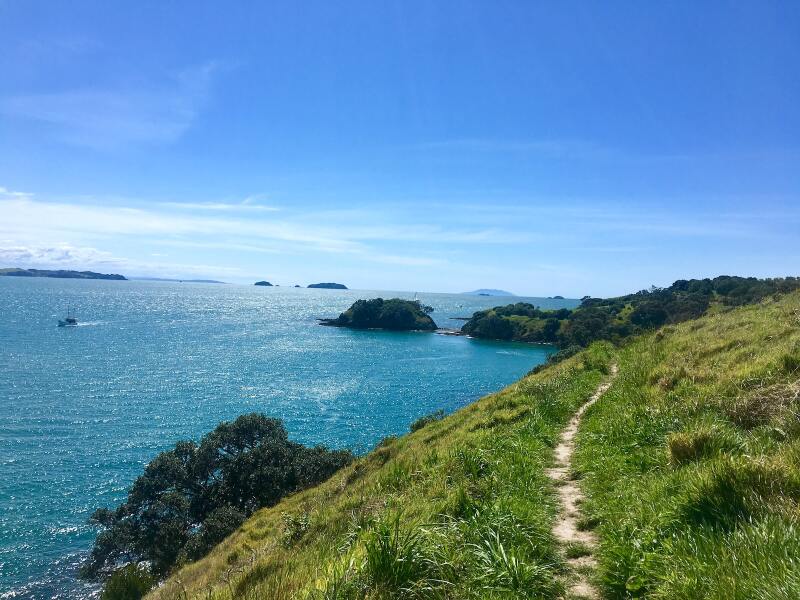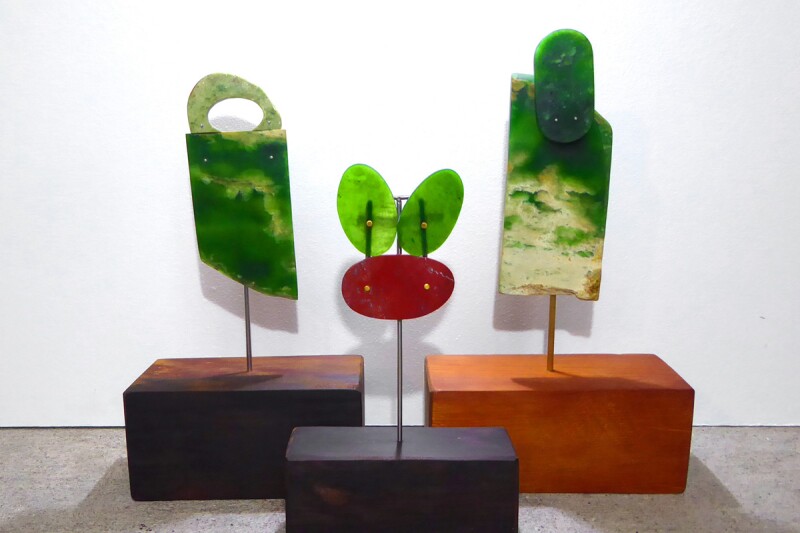Though COVID-19 has stalled many travel plans, we hope our stories can offer inspiration for your current—and future—adventures.
The Indigenous people of New Zealand are the Māori—self-described tangata whenua, people of the land. Home, for them, is the earth. Māori view themselves as being one with the natural world, members of the same family as the land, the sea, the forests, and all living creatures. For these people, ancestral research is entirely different from that of pakeha (white New Zealanders). Instead, they trace a direct genealogical line from their family roots to Mother Earth through their ancestors, the first inhabitants of Aotearoa (the Māori name for New Zealand).
A trip to the country is a magical history tour of Māori legends and culture. Stay in the spirit by experiencing this extraordinary place the way its Indigenous people do, always respecting nature and its resources.

The Four Points by Sheraton, conveniently located in an Auckland arts district
Wellness and wonder await
During your time in Auckland, you can recharge in style at the Four Points by Sheraton. The modern rooms and suites feature Sheraton’s signature bedding, large bathrooms, and free Wi-Fi, as well as spectacular views of the city center from the higher floors. Located in the Aotea Arts Quarter, you’ll be nearby several attractions including Aotea Square, the Auckland Harbor Bridge, Auckland University, and other places to enjoy the outdoors.
You can even conquer jet lag by maintaining a cornerstone of wellness according to the Māori, your thaha tinana or physical well-being, along with the other three cornerstones—spiritual, family, and mental health—with a stroll to tātahi (Māori for beach). Mission Bay Beach is a short walk from the hotel, where you can choose from a workout at the seaside fitness park, a run along the boardwalk, stand-up paddleboarding, or kayaking, among other energizing exercise options.
Outdoor adventures to immerse in nature
The dedicated beachcomber has a plethora of riches to choose from in this island nation. A 40-minute ferry ride brings you from downtown Auckland to the island of Waiheke, home to three beaches: Oneroa, Onetangi, and Palm Beach. Want to visit them all? You can hop on a bus, jump in a taxi, or rent a scooter or mountain bike. There’s also a multi-award-winning restaurant, Three Seven Two, named for the first three digits of the Waiheke phone number. The menu, by Chef Bronwen Laight, is produce-driven, seasonal—and sensational. A highlight is mushroom pierogi with Upland cress, shiitake and oyster mushrooms, and horseradish.
Fifty miles from city center lies Tawharanui, a white-sand beach with rock pools and a popular Ecology Trail. Tawharanui welcomes swimmers, divers, snorkelers, and surfers—but not fishermen. The area is part of a protected marine reserve, where some 50 different species have been recorded, and orcas and bottlenose dolphins occasionally swim by for a surprise visit. Piha Beach, meanwhile, is another great destination for surfers.

Photo by Jil Beckmann/Unsplash
Explore active volcanoes and chiefly mountain trees
Just ten minutes from the hotel, visit an Auckland landmark, the famous Rangitoto, youngest and most active of the city’s six volcanoes, which last erupted 600 years ago. It’s a fitting place to pay respects to Ruaumoko—in Māori mythology, the god of earthquakes and volcanoes, youngest son of “Rangi” (Ranginui, the “Sky Father”) and “Papa” (Papatūānuku, the “Earth Mother”).
On Auckland’s east coast you’ll find Maraetai Beach, part of the Hauraki Gulf (Hauraki is Māori for north wind), where shade is provided by a forest of pōhutukawa trees, aka New Zealand Christmas trees. With their dazzling red flowers and gift for thriving even on steep, rocky cliffs, these trees are prized in Kiwi culture as a symbol of strength and beauty. The Māori regard the pōhutukawa as a chiefly tree or rakau rangatira.
A spectacular show of wildlife

Photo by James Youn/Unsplash
Bird watchers will be delighted by Muriwai Beach, a convention center for the tākapu, also called the Australasian gannet. These large seabirds’ stylish, black-and-white plumage makes them look like they’re ready for a fashion show. A very athletic species, with a wingspan of more than six feet, gannets are plunge-divers and formidable fishers; their pale-blue serrated bills diving into the water at 60 miles per hour enables them to catch fish at a much greater depth than most airborne birds.
Little wonder these seafaring hunters earned the respect of the Māori, who made expeditions to the gannets’ breeding grounds, catching young birds for food and adults for their bones and plumage. The bones were fashioned into chiseling tools and used for applying elaborate facial moko (tattoos). The white feathers were used to decorate canoes or worn by high-ranking individuals.
From skin art to fine art
Speaking of tattoos, if you’d like an indelible souvenir of this trip, Te Wheke Moko Design Studio inks Māori tattoos exclusively. The proprietor rocks a facial moko that will stop you in your tracks.
New Zealand’s largest art institution, the Auckland Art Gallery, has a Māori name—Toi O Tamaki—and displays the many magnificent Māori portraits in its collection (only available for online viewing at the moment, in addition to an immersive virtual tour Toi Tū Toi Ora: Contemporary Maori Art), while the Kura Gallery of Māori Art sells traditional and contemporary Māori carvings, jewelry, furniture, and pounamu, the indigenous green stone that Māori culture values as a taonga (treasure). If you’re visiting Auckland in March, don’t miss the Pasifika Festival, featuring the audible art of dynamic Māori music.

Jeweler and sculptor Neil Adcock’s contemporary Tikis, traditionally representing the first people and worn for luck in Māori culture. // Photo by Kura Gallery of Māori Art
By now your appetite will be as fierce as Tūmatauenga, the Māori god of war and hunting. At the Queen’s Head Bar and Eatery, you’ll savor authentic New Zealand and international cuisine. From burgers to butter chicken and salmon to steak, the focus is on locally sourced products from within Auckland and across New Zealand. Amidst the many meaty options are some umami-rich plant-based picks: Spirulina dumplings with sriracha, toasted cashew, and coconut sauce; chickpea and lentil sliders with red pesto and lemon salted cucumber; Indonesian spiced vegetable and tamarind soup.
A scenic three-hour car ride brings you from your hotel to the breathtaking place dubbed Bay of Islands by Captain Cook. Its Māori name is Ipipiri. Here, you’ll find splendid sights and some of the world’s most pristine beaches—and you’ll appreciate them with awe, just as the Māori always have. The Rock Adventure Cruise promises “The Ultimate Bay of Islands Boat Cruise.” Alternatively, an old-school, environmentally friendly, rigged topsail schooner called the R. Tucker Thompson takes guests around Paihia and Waitangi, and operates a non-profit to teach sailing to young and old, Māori and Pakeha, visitors and Northlanders alike.
Expand your world with The Marriott Bonvoy Boundless™ Card. Learn more at MarriottBonvoy.com/ChaseCards.
Accounts subject to credit approval. Restrictions and limitations apply. Marriott Bonvoy Boundless™ credit cards are issued by JPMorgan Chase Bank, N.A. Member FDIC. Offer subject to change.











